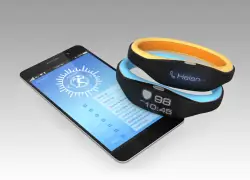
Medical wearable technology is no more a thing of the future; it is certainly one of the hottest digital health trends of 2015. This disruptive innovation has revolutionized the way people connect with the digital world to make themselves healthier and improve their lives. Technology plays a significant role in healthcare by providing physicians access to electronic health information of patients, reducing medical errors and lowering the overall treatment cost and effort. However, obtaining this physiological data accurately and on time from patients has always been a challenge for physicians.
Wearable technology has overcome this difficulty by enabling patients to monitor their health data round the clock and share with the physician whenever required. Wearable medical devices act as bio-sensors which are attached to the human body to detect and monitor various parameters in the body and record health data, which is further integrated into a patient’s care. These devices offer a promising new way for patients and physicians to monitor and react to the vital signs of the body and take appropriate actions. Equipped with wearables, patients are more empowered and informed than ever, results in taking responsibility for their own health. They do not need to frequently visit for clinical checkups anymore; instead the physician could be provided with the required data about their health conditions in no time. This facilitates the clinical team to take better decisions by gaining valuable insights of the patient’s health and tracking medication effect. People require right health information at the right time, and that’s exactly what wearable technology helps them with.
The growing market of Wearable Technology
The global medical wearable market continues to gain momentum from the innovation of sophisticated and user-friendly gadgets and the rapid adoption of these gadgets among users. Driven by growing health awareness among people and increasing chronic diseases, the healthcare technology market is witnessing an exponential growth.
The global wearable medical devices market has been estimated at USD 3.3 billion in 2015 and is projected to reach USD 7.8 billion by 2020, at a CAGR of 17.7% during the forecast period from 2015 to 2020.
Geographically, North America has the largest consumer base, followed by Europe and East-Asia. The major players dominating the medical wearable market are Basis Science, Coventis, Drager, Everist Genomics, Fitbit, Google, Intelensens, Lifewatch AG, Nuubo, Omron Corporation, Philips, Polar Electro, Sotera Wireless, Zephyr Technology and Withings.
Some interesting facts from a recent research on medical wearables:
- 71% of Americans say that medical wearables have improved their health and fitness
- 56% claim that the average life expectancy may grow by 10 years due to wearable-enabled monitoring
- 46% believe medical wearables will reduce obesity by allowing to track nutrition and exercise better
- 42% believe the athletic ability of a person will also be improved significantly as the wearable
devices monitor and boost sports progress - 77% people use wearables for exercising smartly, 75% for collecting and tracking medical information, and 67% for eating better
- By 2016, wearable device OEMs will receive around $30 Billion from device shipment
Let us look at some of the recent innovations in medical wearables space:
- HealBe GoBe, a medical wearable device introduced an automatic hydration level monitoring system, which detects fluid consumption and informs the user via display messages and vibration to encourage hydration improvement.
- Recently, researchers at Nottingham Trent University have devised a way to improve the safety and efficiency of spinal surgeries by using Google glass. Currently a surgeon needs to carry out operations based on the patient information communicated to him verbally by another person, But the new wearable design enables the lead surgeon to receive the information directly through Google glass.
- There are few incredible innovations too – A device named Re-Timer gives you the feeling of summer at winter; it helps people beat seasonal affective disorder in winter, by projecting an artificial harmless light to their eyes, to provide their brain with the same light in summer which improves their sleep and daily activities.
- Technology giant Google has developed solar-powered contact lenses, which being in touch with eyeball, able to monitor glucose level for diabetes, urea level, and body temperature etc.
- A research team from the University of Texas has innovated a tattoo like wearable device which sticks to the skin, receives and transmits health data about the user like hydration level, temperature, heart rate, brain activity etc.
The year 2015 has seen a remarkable evolution from fitness trackers to valuable and sophisticated medical devices, resulting in efficient and cost-saving healthcare solutions. Novelty factor, medical regulatory & compliances, and data privacy remain the primary challenges for the wearable manufacturers. With wearable devices, taking off in the current pace, the demand of software technology solution providers will certainly increase, to leverage the true potential of the wearables.
You might be interested to know, Harbinger systems is exhibiting at the Wearable Technology Show from December 1-2, 2015, Santa Clara. Meet us at booth #128 and also join us for a panel session on ‘Medical Wearables’ on December 1. Click here to know more.






